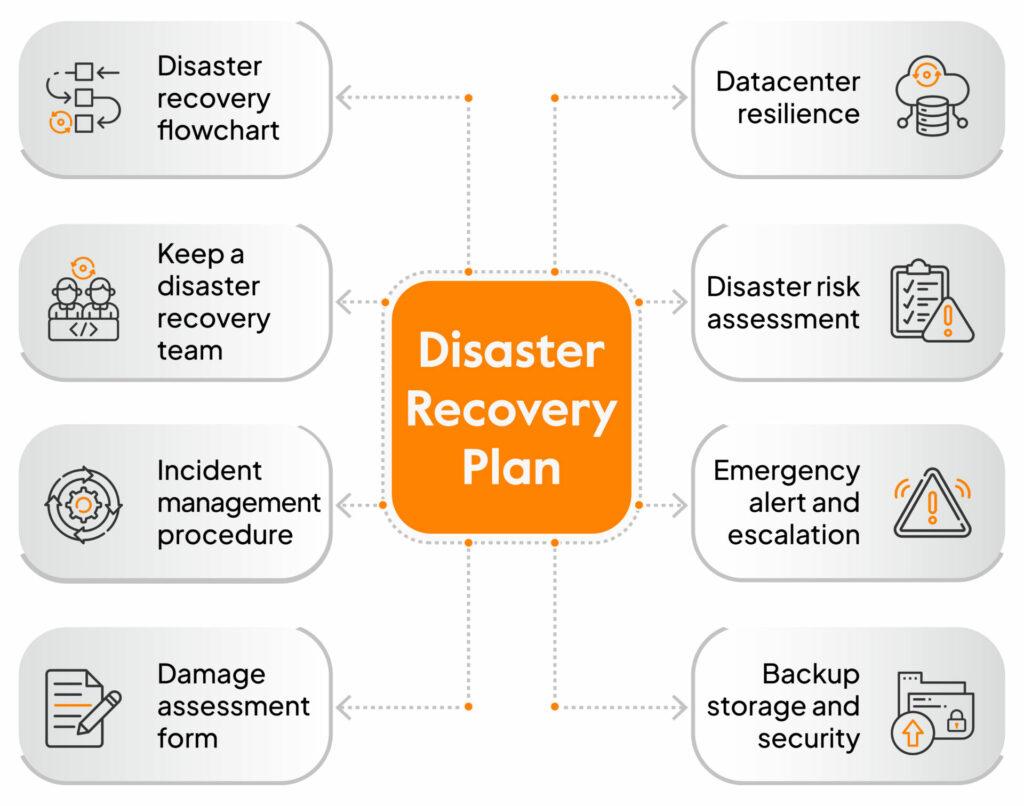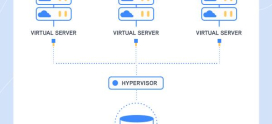
How to Build a Bulletproof Disaster Recovery Plan
When disaster strikes, whether it be a natural calamity, a cyber-attack, or an unforeseen business interruption, the panic can be overwhelming. You might find yourself asking, “Will I be able to recover from this?” or “How can I protect my vital information?” These concerns are valid, and many of us have felt that ice-cold grip of uncertainty when our systems or lives are threatened by unexpected events. But don’t worry—you’re not alone in feeling this way. Building a bulletproof disaster recovery plan can seem daunting, but in reality, it’s a manageable task that will empower you and give you peace of mind.
Think of a disaster recovery plan as a life jacket when you’re on a boat. You might not need it right now, but in a storm, it could very well save your life. This article promises to guide you through the essential steps to create a robust disaster recovery plan, ensuring that when a storm comes your way, you’ll be ready to navigate through it with confidence.
Understanding the Need for a Disaster Recovery Plan
A disaster recovery plan (DRP) is not just a luxury; it’s a necessity. Think about the countless instances where businesses—and individuals—have suffered tremendous losses due to unforeseen disasters. Fire, flooding, cyber-attacks, and hardware failures are just a few examples. The aftermath can be devastating, leading to lost revenue, damaged reputations, and emotional distress.
The Cost of Being Unprepared
Research backs this up. According to FEMA, about 40% of small businesses never reopen after a disaster. The reasons are often tied to not having a well-documented and practiced recovery plan. We don’t want you to be part of that statistic.
Step 1: Risk Assessment
Your first step in developing a disaster recovery plan is to conduct a thorough risk assessment. Identify potential risks that could disrupt your operations. This will not only guide your planning but also help allocate resources effectively.
Identifying Vulnerabilities
Start by asking yourself these questions:
- What natural disasters could impact my location?
- What technical failures might occur in my systems?
- How vulnerable am I to cyber-attacks?
Document your findings. Understanding the risks will give you clarity and focus in the next steps of your planning.
Step 2: Define Recovery Objectives
Define your Recovery Time Objective (RTO) and Recovery Point Objective (RPO). In simple terms, RTO states how quickly you want to recover after a disaster, while RPO indicates how much data loss is acceptable.
Setting Quantifiable Goals
For example, if you can tolerate up to four hours of downtime and a data loss of only two hours’ worth of work, your RTO is four hours and your RPO is two hours. Establishing these objectives will dictate your planning priorities.
Step 3: Implement Data Backup Solutions
Data is the lifeblood of any organization, and ensuring its safety should be your top priority. Regular backups are essential.
Choosing the Right Backup Solutions
Consider the following options:
- On-Site Backups: These are hard drives and storage systems you maintain. They are quick for restoration but susceptible to the same disasters as your primary systems.
- Off-Site Backups: Store backups in a different location, safeguarding against local disasters.
- Cloud Services: Consider secure cloud options for real-time data replication.
Whatever route you choose, ensure it aligns with your RTO and RPO.
Step 4: Create a Comprehensive Recovery Plan
Your recovery plan should be a detailed guide to restoring normal operations after a disaster. Think about it as a recipe—each step is vital for the right outcome.
Essential Components of a DRP
- Roles and Responsibilities: Assign a recovery team and outline who does what.
- Communication Plan: Specify how information will be communicated among your teams and external stakeholders.
- Emergency Contacts: Keep a list of crucial contacts readily available.
- Step-by-Step Recovery Process: Clear instructions for restoring systems, accessing data, and working during recovery.
Step 5: Regular Testing and Updating
A plan is only as good as its execution. Regular tests and updates ensure your DRP remains relevant and effective. This is similar to going for routine check-ups; it helps catch issues before they become serious problems.
Conducting Simulation Drills
Run simulations or “fire drills” to practice disaster recovery. Evaluation post-drill is essential to identify weaknesses and areas for improvement.
Step 6: Training Your Team
Your team must not only be familiar with the plan, but they should be trained on what to do in a crisis. Everyone needs to be on the same page to ensure a seamless recovery process. Are they equipped to handle uncertainties?
Organizing Educational Sessions
Offer training sessions to review the responsibilities outlined in the DRP. Consider these as essential as a safety briefing before a flight!
Step 7: Leverage Technology and Tools
In today’s digital world, various technologies can help streamline and enhance your disaster recovery efforts.
Technology Solutions to Consider
- Virtualization: Streamlines backup and recovery procedures.
- Automation Tools: Enables automatic backups and alerts.
- Monitoring Software: Keeps an eye on systems to catch potential issues before they escalate.
Case Study: A Real-World Example
Consider the case of a small retail business that faced a major flood. They had anticipated such disasters and had implemented a solid DRP. Their preparation included off-site backups and defined RTO and RPO. When the flood struck, their systems went down, but since they had tested their recovery plan, they were able to resume operations swiftly. This business was back on their feet in less than 48 hours, demonstrating how a robust plan can make all the difference.
FAQs
What is a disaster recovery plan?
A disaster recovery plan is a documented strategy that outlines how an organization will recover and restore its critical operations after a disaster.
Why is a disaster recovery plan important?
It is crucial for minimizing downtime, protecting data, and ensuring a quick return to normal operations after a disruptive event.
How often should I test my disaster recovery plan?
It’s advisable to test your plan at least annually or whenever significant changes occur in your operations or technology.
What are RTO and RPO?
RTO (Recovery Time Objective) is the maximum acceptable amount of time to restore systems after a disaster, while RPO (Recovery Point Objective) indicates the maximum amount of data loss, measured in time, that is acceptable.
What data backup solutions should I consider?
Consider on-site backups, off-site backups, and cloud solutions depending on your needs and budget. A mixture of options often provides the best protection.
Who should be on my disaster recovery team?
Your Disaster recovery team should include key personnel from various departments, such as IT, operations, human resources, and communications. It is essential to have representatives who understand different aspects of your organization and can contribute effectively to the recovery plan. Additionally, consider involving external experts, if necessary, to bring in specialized knowledge. Each team member should have clearly defined roles and responsibilities to ensure a coordinated response during a crisis.
Conclusion
Creating a disaster recovery plan may initially seem like a daunting task, but it is a critical step in safeguarding your organization against unforeseen disruptions. By following the outlined steps—conducting a risk assessment, defining recovery objectives, implementing data backup solutions, developing a comprehensive recovery plan, regularly testing and updating, training your team, and leveraging technology—you can build a robust plan that will empower you to respond effectively in a crisis. Remember, a well-prepared organization not only protects its assets but also fosters confidence among employees, clients, and stakeholders. Take the time today to invest in your disaster recovery plan, and you will reap the benefits of peace of mind tomorrow.









